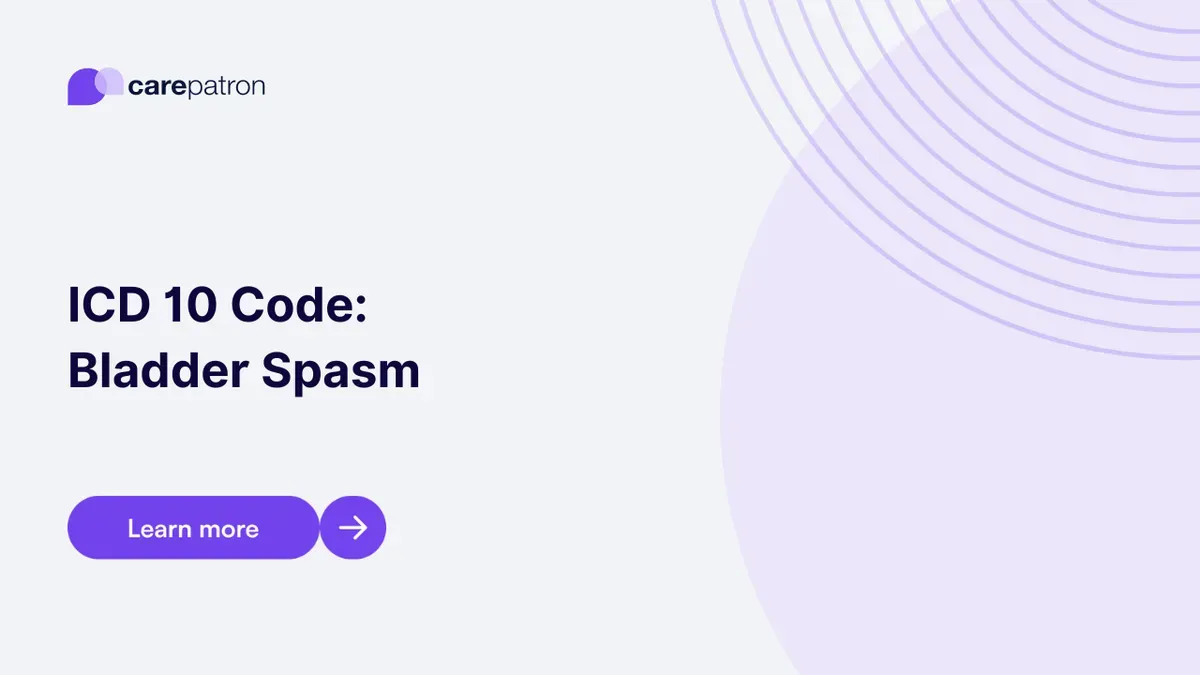
Bladder Spasm ICD-10-CM Codes
Explore the specific ICD-10 Codes used for diagnosing Bladder Spasms, including descriptions and treatment guidelines. Stay informed with Carepatron’s guide.
Use Code
Commonly asked questions
Bladder Spasm ICD codes can be used when diagnosing or documenting a case of bladder spasm or related symptoms.
Treatments for Bladder Spasm include managing underlying conditions, medications to relax bladder muscles, lifestyle changes, and physical therapy.
A diagnosis code for bladder spasm represents a medical condition where the muscles of the bladder contract involuntarily, leading to various symptoms such as urgency and incontinence. It assists in standardized communication among healthcare providers.
EHR and practice management software
Get started for free
*No credit card required
Free
$0/usd
Unlimited clients
Telehealth
1GB of storage
Client portal text
Automated billing and online payments
